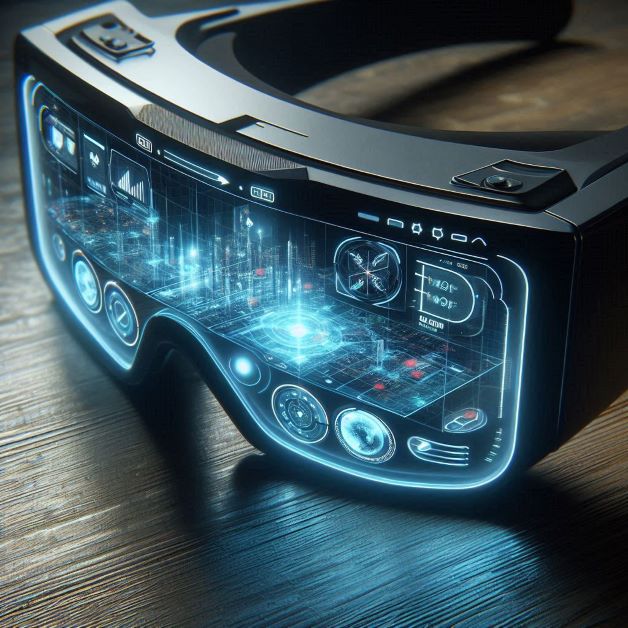Microdisplays play a crucial role in the evolution of Augmented Reality (AR) and Virtual Reality (VR) technologies. These compact, high-resolution displays are essential for creating immersive experiences, enabling applications in gaming, training, healthcare, and more. This article delves into the role of microdisplays in AR and VR, exploring market trends, key devices, development challenges, and the future of this innovative technology.
The microdisplay industry is expected to reach USD 3.0 billion in 2029 from USD 1.3 billion in 2024, expanding at a CAGR of 18.2% during the forecast period. The increase in demand for microdisplays is due to the integration of displays into various devices such as wearables and near-to-eye devices. The market may grow due to factors such as technological improvements in microdisplays such as MicroLED and OLEDoS technology, miniaturization trend in consumer electronics, increased usage of HMDs across a number of sectors, and growing global adoption of ADAS and HUDs in automotive sector.
Role of Microdisplays in AR and VR
Microdisplays are critical components in AR and VR headsets, providing the visual information that immerses users in digital environments. Their small size allows for lightweight, compact designs that enhance portability without sacrificing quality. Key characteristics of microdisplays include:
- High Resolution: Essential for delivering sharp, clear images that prevent motion sickness and enhance user experience.
- Wide Field of View (FOV): Important for creating a more immersive experience by enabling users to see a larger digital environment.
- Low Power Consumption: Vital for extending battery life in portable devices.
By integrating microdisplays, AR and VR devices can offer realistic graphics and seamless interactions, making them more appealing to consumers and professionals alike.
Market Trends in AR/VR Microdisplays
The AR/VR microdisplay market is witnessing significant growth, driven by various trends:
- Rising Demand for Immersive Experiences: As gaming, training, and remote collaboration become more mainstream, the demand for high-quality AR and VR experiences continues to rise.
- Technological Advancements: Innovations in microdisplay technology, such as OLED and LCD advancements, are improving brightness, contrast, and response times, enhancing user experiences.
- Increasing Adoption Across Industries: Beyond gaming, industries such as healthcare, education, and manufacturing are adopting AR and VR solutions for training, simulations, and visualization, further fueling market growth.
- Cost Reduction: As manufacturing processes improve and competition increases, the cost of microdisplays is expected to decline, making AR and VR devices more accessible to a broader audience.
Download PDF Brochure @ https://www.marketsandmarkets.com/pdfdownloadNew.asp?id=430

Top AR/VR Devices Using Microdisplays
Several leading AR and VR devices leverage microdisplay technology to provide exceptional user experiences:
- Oculus Quest 2: This standalone VR headset features high-resolution displays that offer immersive gaming and social experiences without the need for a connected PC.
- Microsoft HoloLens 2: Utilizing microdisplay technology, HoloLens 2 enhances mixed reality experiences for professionals in fields such as healthcare and engineering.
- Sony PlayStation VR: With its microdisplay setup, this headset provides an immersive gaming experience, capitalizing on the popularity of console gaming.
- Magic Leap 1: This AR headset integrates microdisplays to create interactive experiences in augmented reality, catering to both developers and consumers.
- HTC Vive Pro: Designed for high-end VR experiences, the Vive Pro uses microdisplay technology to deliver stunning visuals and comfort for extended use.
Challenges in AR/VR Microdisplays Development
Despite their potential, several challenges hinder the development of microdisplays for AR and VR:
- Resolution and Pixel Density: Achieving higher resolution and pixel density in compact displays remains a technical challenge, as users demand more detailed and realistic visuals.
- Heat Management: As microdisplays increase in brightness and power, managing heat generation becomes crucial to maintain performance and prevent discomfort.
- Integration with Other Technologies: Combining microdisplays with advanced sensors, optics, and tracking systems requires seamless integration, which can complicate design and manufacturing processes.
- Cost Constraints: While advancements are being made, high production costs for microdisplay technologies can limit accessibility for consumers and small businesses.
Future of AR/VR Microdisplays Industry
The future of AR and VR microdisplays is promising, with several trends and innovations on the horizon:
- Higher Resolution Displays: As technology advances, we can expect microdisplays with even higher resolutions, enhancing visual fidelity and user immersion.
- Enhanced Interactivity: Integration with advanced haptic feedback systems and eye-tracking technology will improve user interactions, making AR and VR experiences more intuitive.
- Wider Adoption in Various Industries: As costs decrease and technology improves, expect increased adoption in sectors like education, training, and healthcare, where immersive simulations can enhance learning and performance.
- Flexible and Lightweight Designs: The development of flexible microdisplay technologies will lead to lighter and more comfortable AR and VR devices, expanding their usability.
- Artificial Intelligence Integration: AI-driven algorithms can optimize display performance, improve user experiences, and personalize content, making AR and VR applications more engaging.
Microdisplays Industry are pivotal in advancing AR and VR technologies, offering numerous opportunities across various sectors. As the market continues to grow, key players must address existing challenges while capitalizing on emerging trends. With ongoing innovations and increasing demand for immersive experiences, the future of AR and VR microdisplays looks bright, promising even more groundbreaking applications and experiences.
